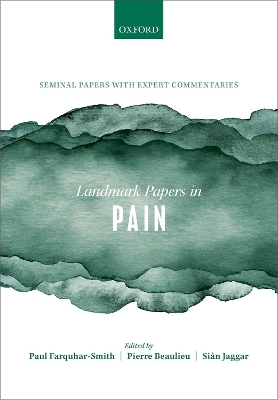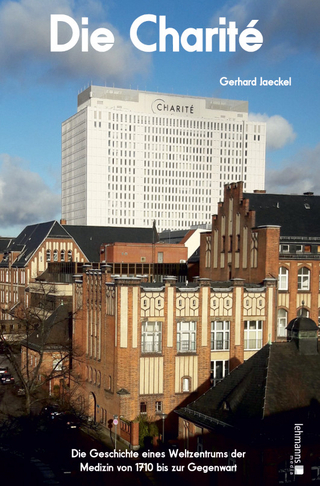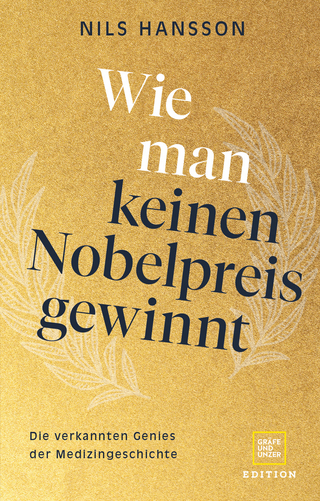
Landmark Papers in Pain
Oxford University Press (Verlag)
978-0-19-883435-9 (ISBN)
Pain Medicine, a relatively new specialty, has proven increasingly relevant to medical practitioners in every field. The specialism of pain has emerged over the past 50 years, largely due to the persistence of experts and new medical evidence that points to its necessity. Today, it is a distinct and integral part of global medical practice.
Landmark Papers in Pain offers a comprehensive inventory of over 80 key studies in pain medicine from the last 100 years. Each paper is accompanied by a concise commentary on the significance of the original findings written by an expert in pain. The reviews discuss how the paper influenced the development of the speciality, and how the findings have advanced our global comprehension of pain. Together, the selected papers and reviews chart the growth of an embryonic field into the modern speciality of pain medicine.
Complied by leading specialists in the field, the papers included in this book are significant for any student, researcher, clinical practitioner, or medical historian interested in pain medicine. Organised into eight distinct topics and cross-referenced by topics and author of original paper, the book is comprehensive in its coverage and easy to use. A review of the contemporary and historical research that shaped the speciality of pain, Landmark Papers in Pain is essential reading for all medical practitioners with an interest in pain medicine.
Dr Paul Farquhar-Smith, MA, MB, BChirFRCA, PhD, FFPMRCA, FFICM, is at present a Consultant in Pain Medicine and Anaesthesia at The Royal Marsden NHS Foundation Trust in London, UK. He specialises in pain in cancer patients and survivors (post-surgical chronic pain, chemotherapy induced neuropathy), and anaesthesia for breast and reconstructive surgery. Dr Pierre Beaulieu is at present a Professor of Anesthesiology and Pharmacology at Université de Montréal in Canada. He specialises in the pharmacology and neurobiology of pain, the use of cannabinoids for treatment of pain, and in local anaesthetics Dr Siân Jaggar is at present a Consultant in Anaesthesia at Royal Brompton & Harefield NHS Foundation Trust in London, UK. She specialises in adult and paediatric cardiothoracic anaesthesia and pain relief. She has a particular interest in education as a tool to enhance understanding between different working groups. She is the Royal College deputy regional advisor for the North West Thames region and the lead for less than full time trainees in this region.
Section 1: Historical
1: JAW (Tony) Wildsmith: Local anaesthetic substitutes for cocaine
2: Ben M. Thomas: Innovative concepts in pain management
3: Sebastian Brandner and Brigitta Brandner: Explaining reflex sympathetic dystrophy
4: Alain Eschalier and Christophe Mallet: The rediscovery of paracetamol
5: Fabrizio Benedetti: The pharmacology of placebos
6: Jean-Sébastien Walczak: Understanding the responsiveness of c-fibres
7: Tony Dickenson: A new theory of pain
8: Manon Choinière and Gabriella Pagé: Three determinants of pain
9: Guy Rousseau: Purinergic nerves: a new type of nerve
10: Jeffrey S. Mogil: Genetic differences in opiate receptors
11: Pierre Rainville: Endogenous opioids in placebo-induced analgesia
12: Éric Troncy: Ethical pain experimentation in conscious animals
13: Argyro Fassoulaki: Local anaesthetic creams
14: Cathy Price: The backpain revolution
15: Pierre Sirois and Pedro D'orléans-Juste: The mechanism of aspirin
16: Yasser Al Omran and Qasim Aziz: Mechanisms of visceral pain in IBS
17: Philippe Richebé and Cyril Rivat: The effects of morphine on the central nervous system
18: Joan Hester: Opiods in palliative care
19: Tony Dickenson: Endogenous opioids in the central nervous system
20: Craig W. Steven: Spinal opioid analgesia in the rat
Section 2: Firsts
21: Paul Farquhar-Smith: The key role of NGF in inflammatory pain processing
22: Elizabeth J. Bradbury and Nicholas D. James: Mapping of neurotrophin receptors on adult sensory neurons
23: Stephen R. Humble: Plasticity in somatic receptive fields after nerve injury
24: Amanda Klein and Matthias Ringkamp: Peripheral neural mechanisms of cutaneous hyperalgesia and heat pain
25: Mary E. Abood and Thomas Gamage: The Cloning and Characterization of CB1
26: Mark F. Bird and David Lambert: Deorphanisation of ORL-1/LC132 by reverse pharmacology in two landmark studies
27: Istvan Nagy: The capsaicin receptor
28: Istvan Nagy: Vanilloid receptor 1 in inflammatory thermal hyperalgesia
29: Pierre Rainville: A signature of pain in the brain
30: John Schutzer-Weissmann: Cytokines as central to peripheral sensitisation and hyperalgesia
31: Claudia Sommer: Endogenous opioids mediate stress-induced analgesia
32: Ke Ren Ronald Dubner: The first crystal structure of an iGluR ligand-binding core
33: Andrea Hohmann: Control of pain initiation by endogenous cannabinoids
34: Julie Desroches: Peripheral Analgesia involves Cannabinoid Receptors
35: Marzia Malcangio: Glia: a new pain target
36: Bradley Kerr and Muhammad Saad Yousuf: The challenges of animal models of pain
37: Philippe Sarret: Mechanisms of bone cancer pain
38: Roger Knaggs: Molecular Structure of the Mu-Opioid Receptor
39: Serge Marchand: Milestone Effect of DNIC in our Understanding of Pain
40: Sheila Black: Original description of central sensitisation
41: Lesley Bromley: Molecular basis for Placebo effect
Section 3: Science
42: Robert D. Searle: Early discussions on a mechanistic approach to pain
43: Alfredo Ribeiro and Da Silva Claire Magnussen: Plasticity: a key concept in pain
44: Enrique Collantes: The importance of descending modulatory pain systems
45: Helen Laycock: Nocebo and its importance in clinical practice
46: Pierre Beaulieu: Mechanisms of Action of Acetaminophen for Pain Treatment
47: Juergen Sandkuehler: Making the link from central sensitization to clinical pain
Section 4: Clinical
48: Vicky Tidman: Proof of concept: epidural morphine
49: Mike Shipley: The Definition of Fibromyalgia
50: Suzanne Chapman: The advent of PCA for post operative analgesia
51: Matthew J. Allsop and Michael Bennett: Undertreatment of pain with metastatic cancer
52: Alison Bliss: Faces scales in paediatric pain assessment
53: Stephan Schug: Epidural block and phantom limb pain
54: Giovambattista Zeppetella: Clarifying the concept of Breakthrough pain
Section 5: Mechanisms
55: Alison Bliss: Paediatric pain epidemiology
56: Peter Kamerman: Recognising the importance of HIV disease and pain
57: Andrew N. Davies: Fast acting fentanyl for breakthrough pain
58: Paul Farquhar-Smith: The additive analgesia of adrenaline in epidural blockade
59: Felicia Cox: What is the clinical relevance of the Likert scale for pain
60: Jane Quinlan: Post operative pain: assessing the standards
61: Kirsty Bannister: Opioid induced hyperalgesia
62: Naomi Scott: CRPS epidemiology
63: Paul Farquhar-Smith: Seminal paper on epidemiology of cancer pain
64: Arun Bhaskar: Endoscopic ultrasound guided coeliac plexus block
Section 6: Neuropathic
65: Nicholas D. James and Elizabeth J. Bradbury: Autotomy: an early neuropathic pain model
66: Tudor Phillips: Risk factors for post amputation pain
67: Matthew Brown: Chronic constriction injury (CCI) model of neuropathic pain
68: Mick G. Serpell: Antineuropathic medication combination therapy
69: Rajesh Gupta: RCT evidence for gabapentin in post herpetic neuralgia
70: Turo J. Nurmikko: Identification of the target of gabapentinoid action in neuropathic pain
71: Matthew Brown: Recognition of the importance of Neuropathic pain epidemiology
72: Abdelghani Mowafak: Botox analgesia for neuropathic pain
73: Sibtain Anwar: DNIC and prediction of chronic post surgical pain
74: Richard M. Langford: Pregabalin in the reduction of chronic post knee surgery chronic pain
75: Toby Newton John: Multidisciplinary Cognitive Behavioural Treatment for Chronic Pain
76: Rakesh Jain: Disability in Chronic Low Back Pain
Section 7: Psychosocial
77: Amanda Williams: The Understanding of Social Effects in Pain
Section 8: Genetics
78: Bhagat Singh. Alban Latremoliere, and Michael Costigan: Congenital insensitivity to pain
79: Ingolf Cascorbi: Polymorphic CYP2D6 as the Responsible Enzyme of Activation
80: Matthew Hamilton: COMT genotypes in pain responses
81: Bradley J. Kerr: The link between NaV1.7 mutation and erythromelalgia
82: Fausto Morell-Ducos: COMT and morphine use in cancer pain
83: Roman Cregg and Biloshytsky Vadym: Pioneering use of gene therapy for pain
| Erscheinungsdatum | 04.10.2018 |
|---|---|
| Reihe/Serie | Landmark Papers In |
| Verlagsort | Oxford |
| Sprache | englisch |
| Maße | 170 x 247 mm |
| Gewicht | 606 g |
| Themenwelt | Medizin / Pharmazie ► Medizinische Fachgebiete ► Schmerztherapie |
| Studium ► Querschnittsbereiche ► Geschichte / Ethik der Medizin | |
| ISBN-10 | 0-19-883435-7 / 0198834357 |
| ISBN-13 | 978-0-19-883435-9 / 9780198834359 |
| Zustand | Neuware |
| Informationen gemäß Produktsicherheitsverordnung (GPSR) | |
| Haben Sie eine Frage zum Produkt? |
aus dem Bereich


